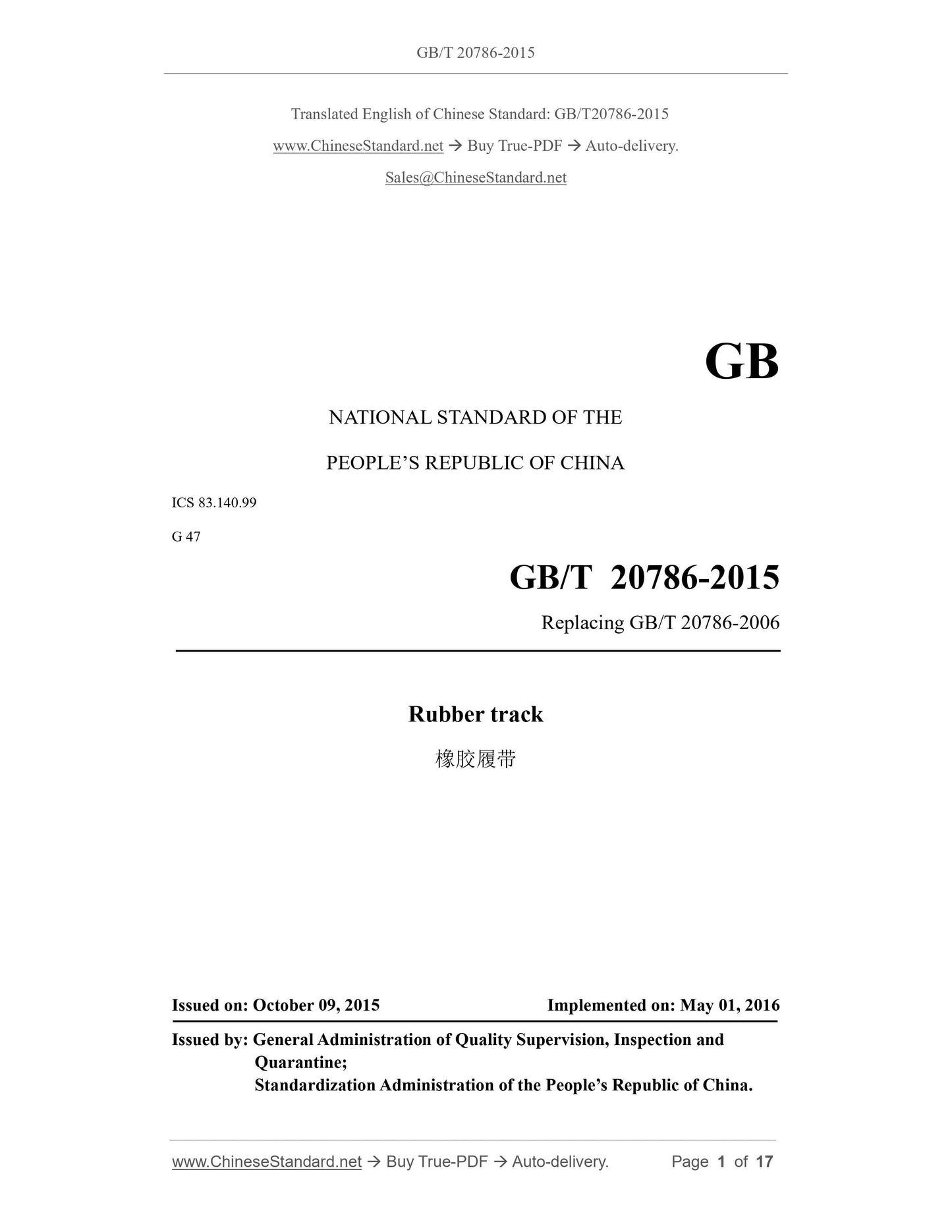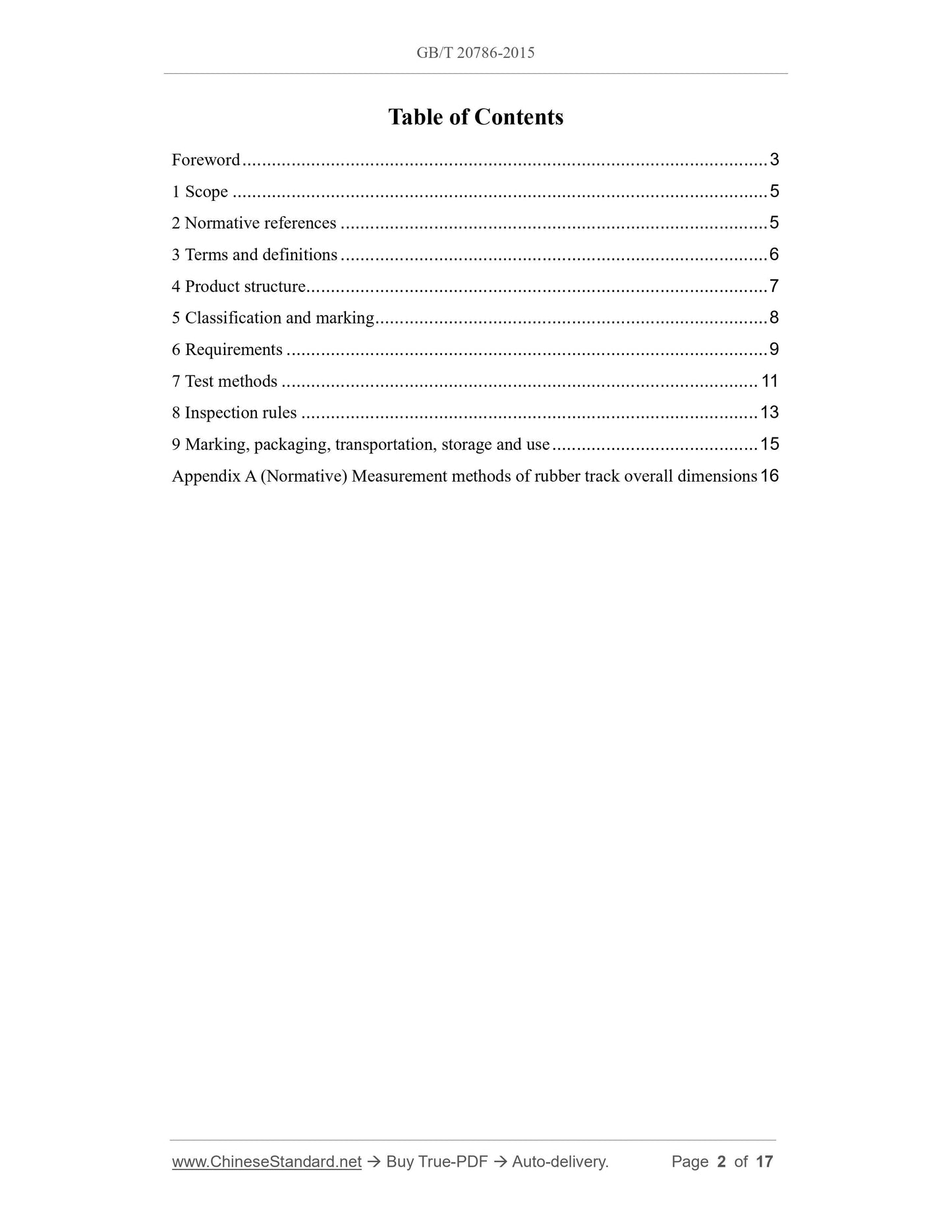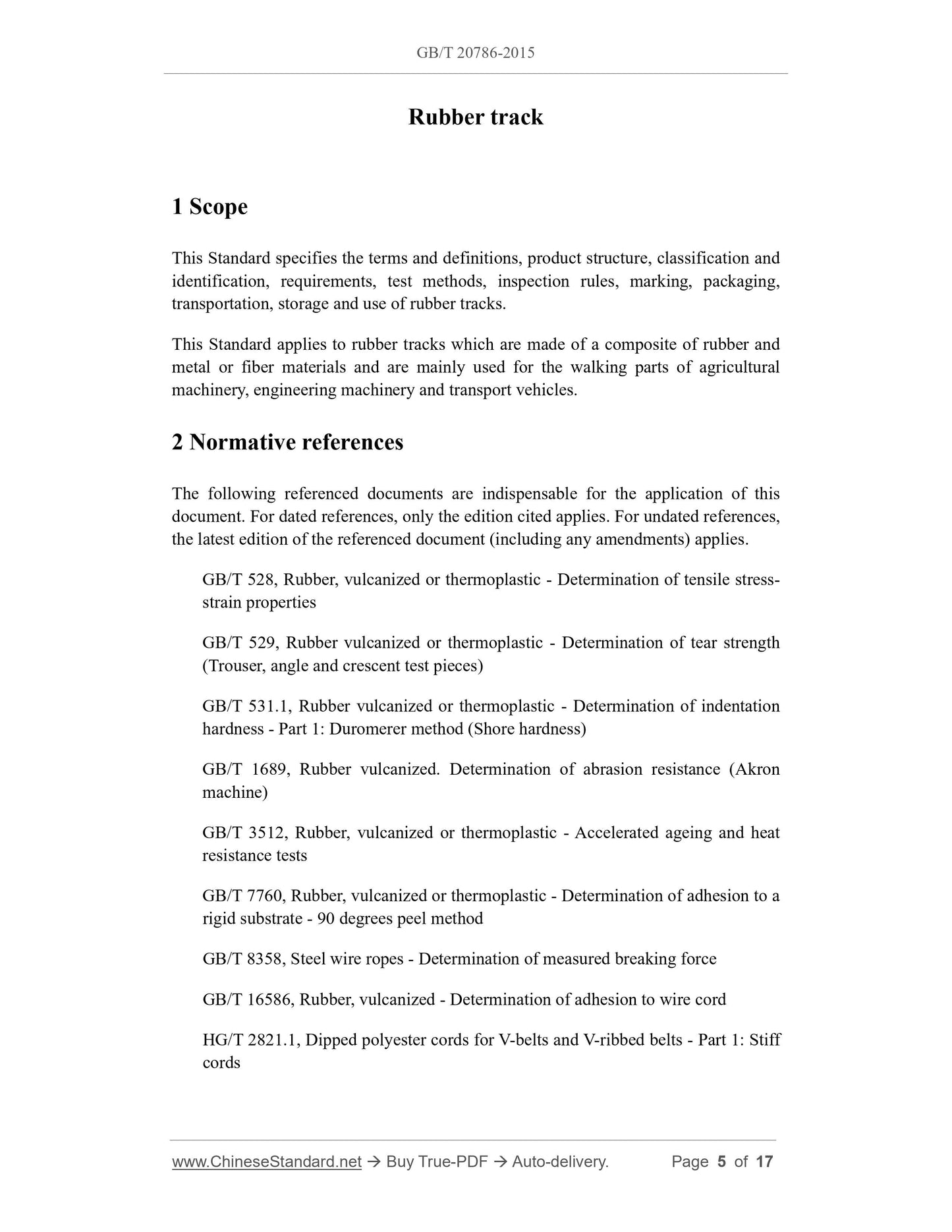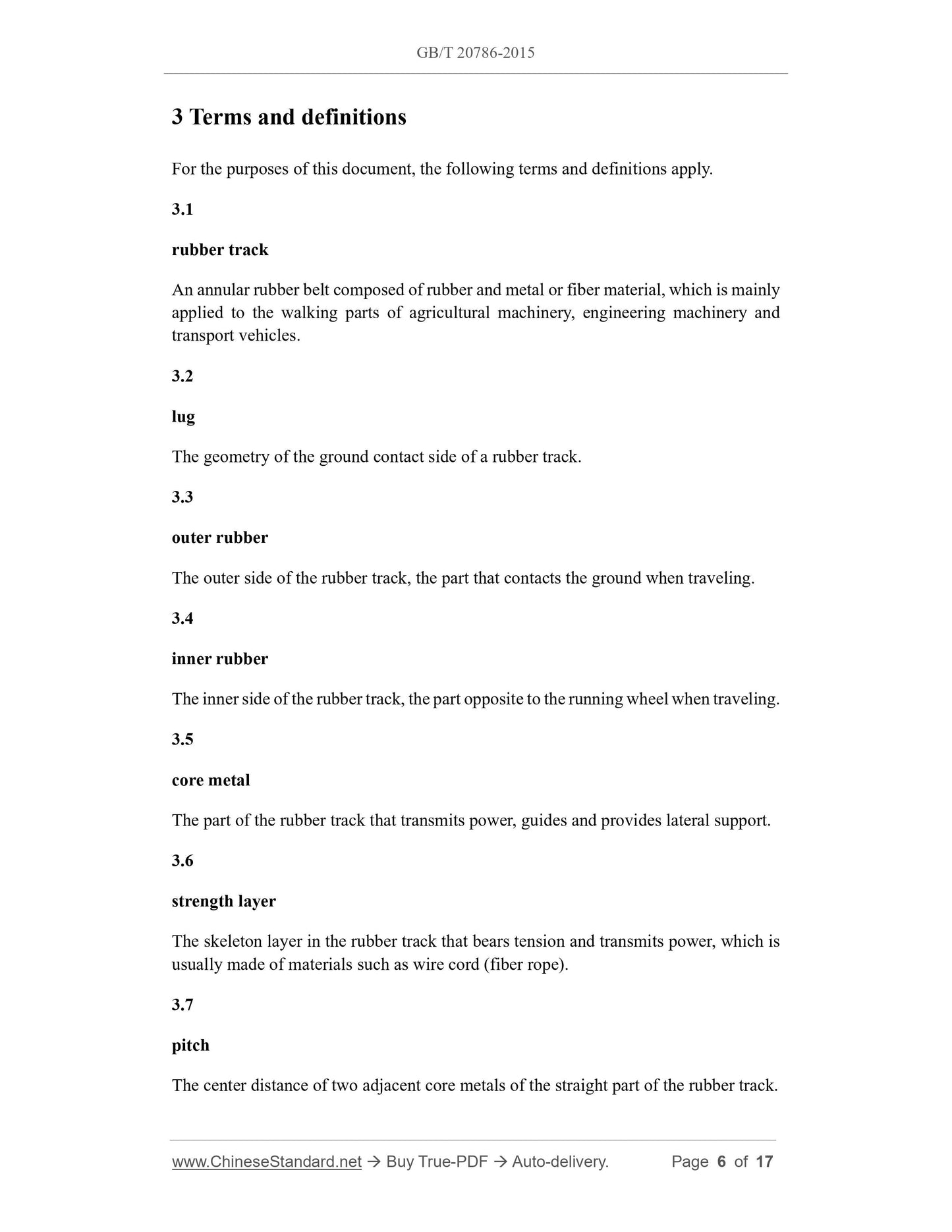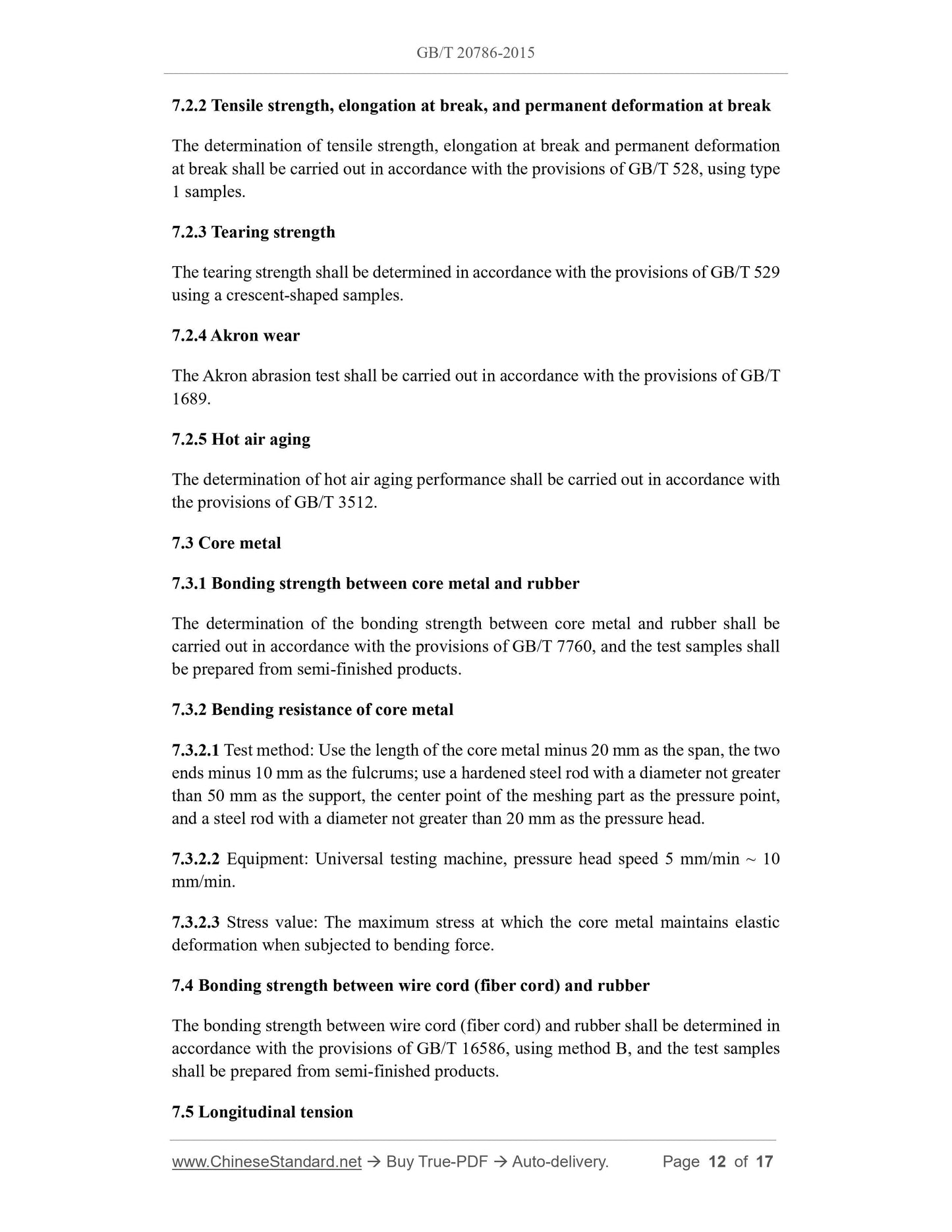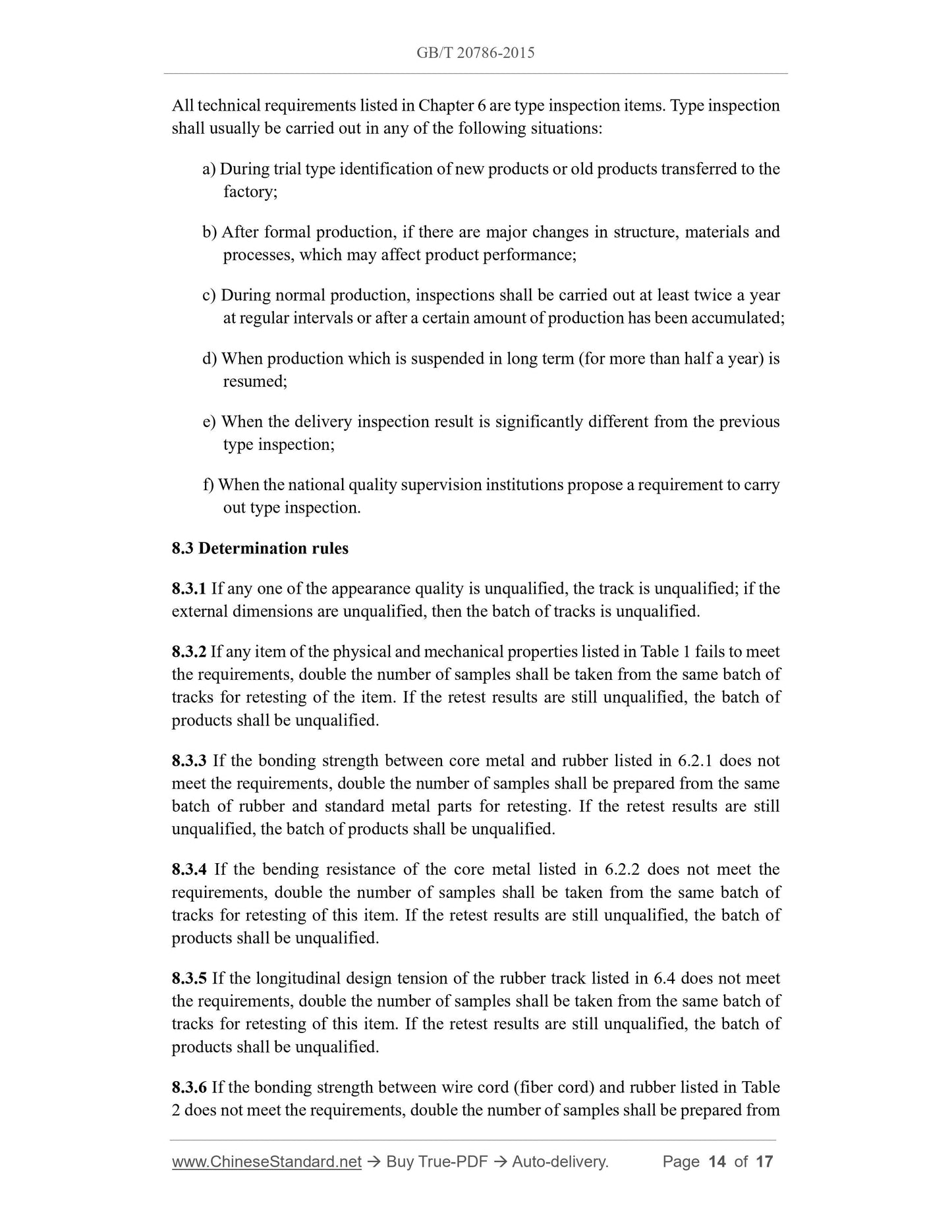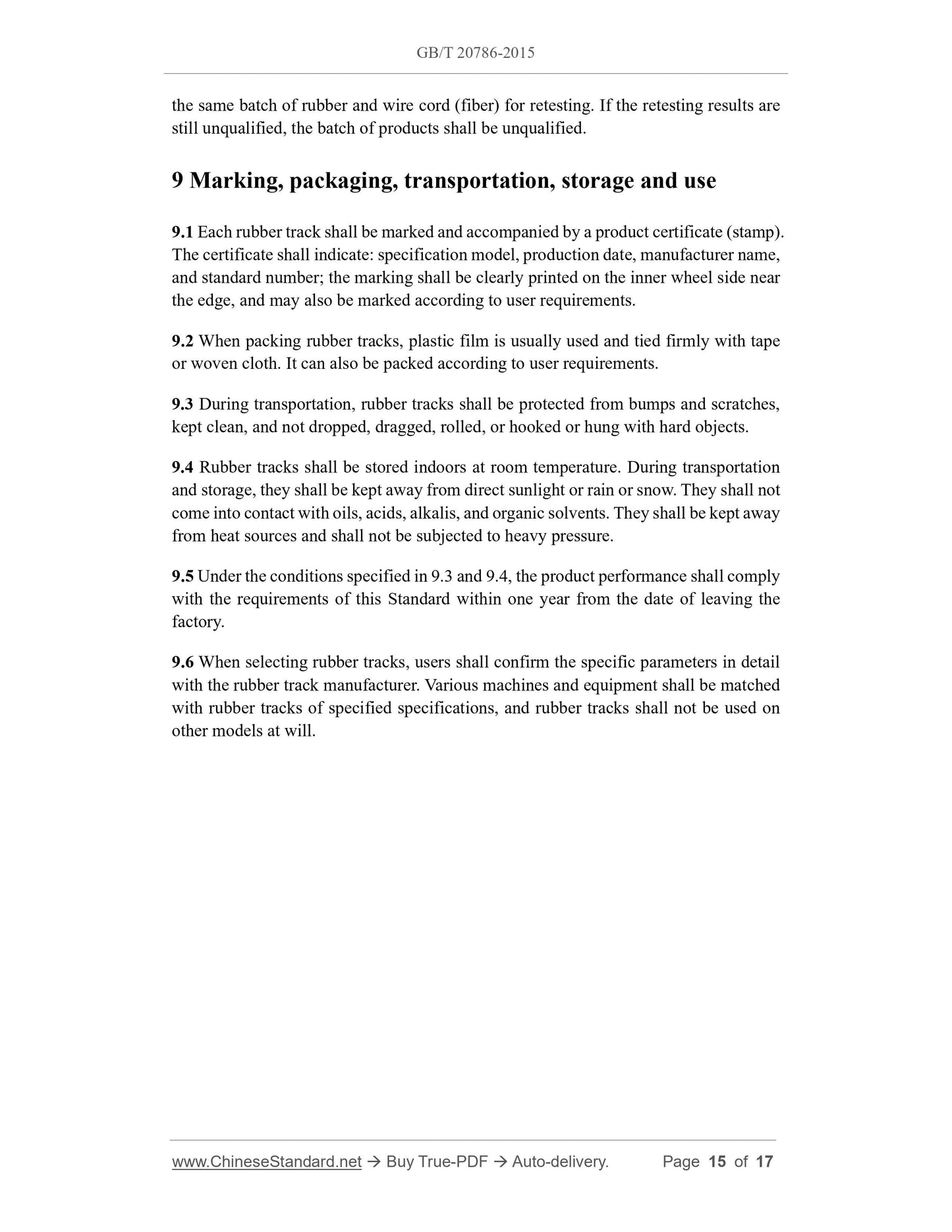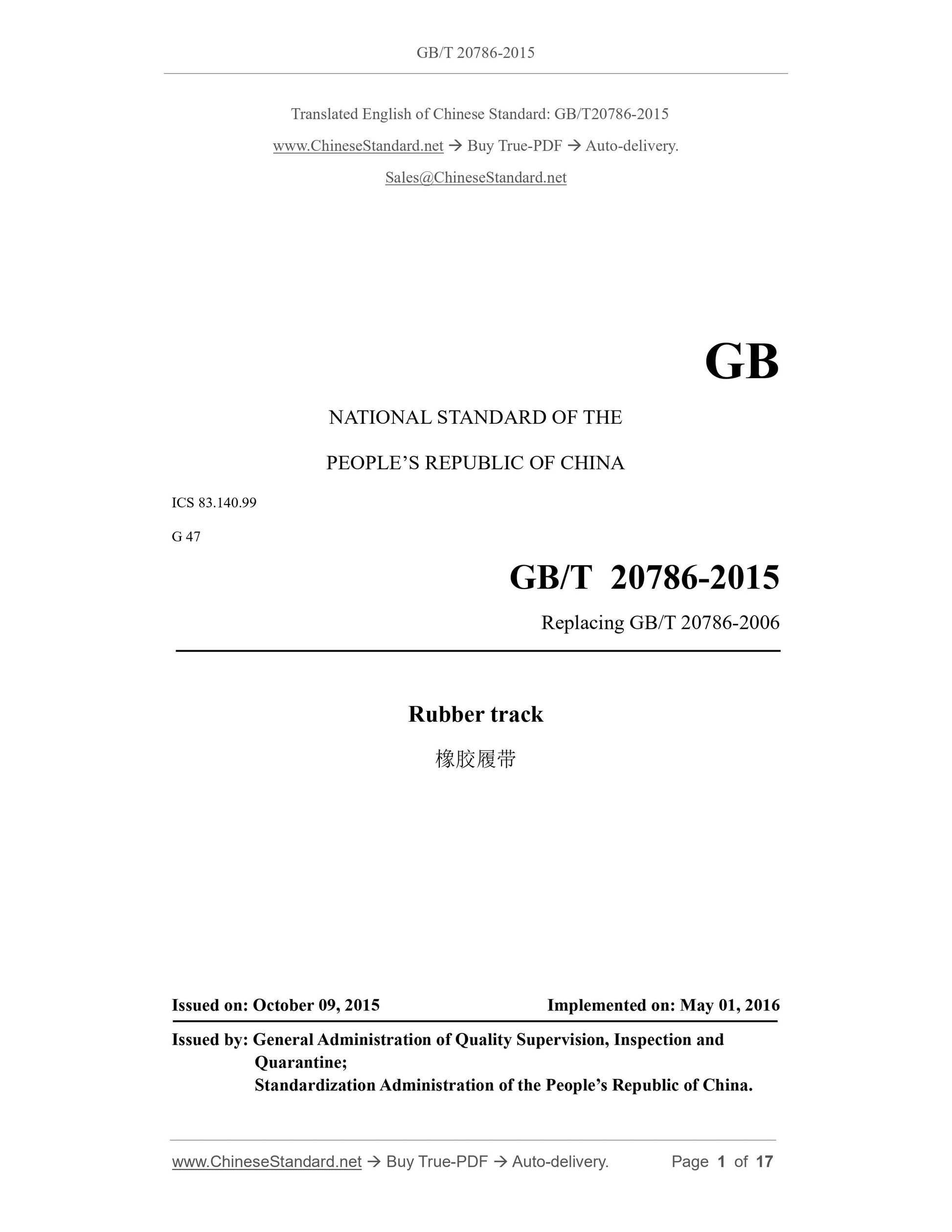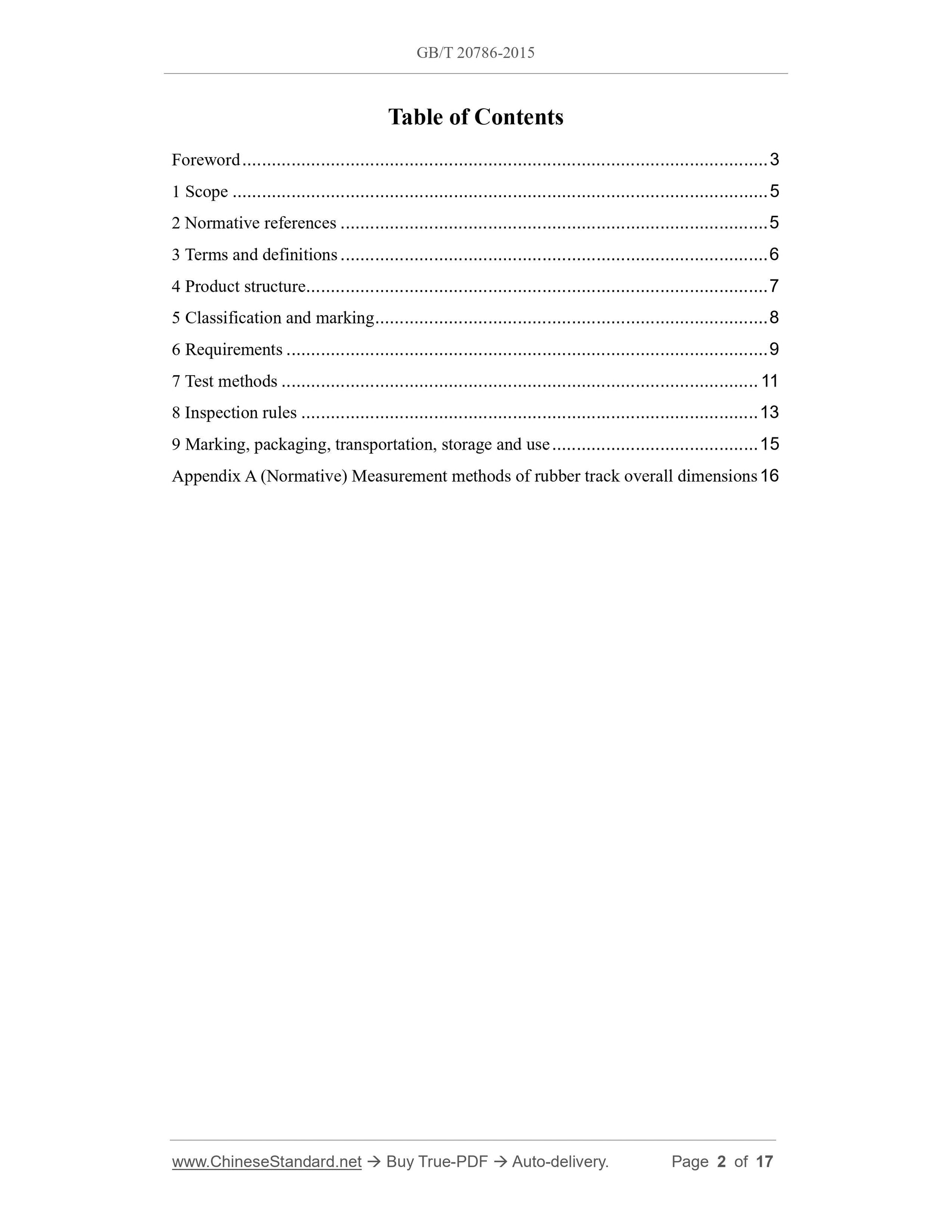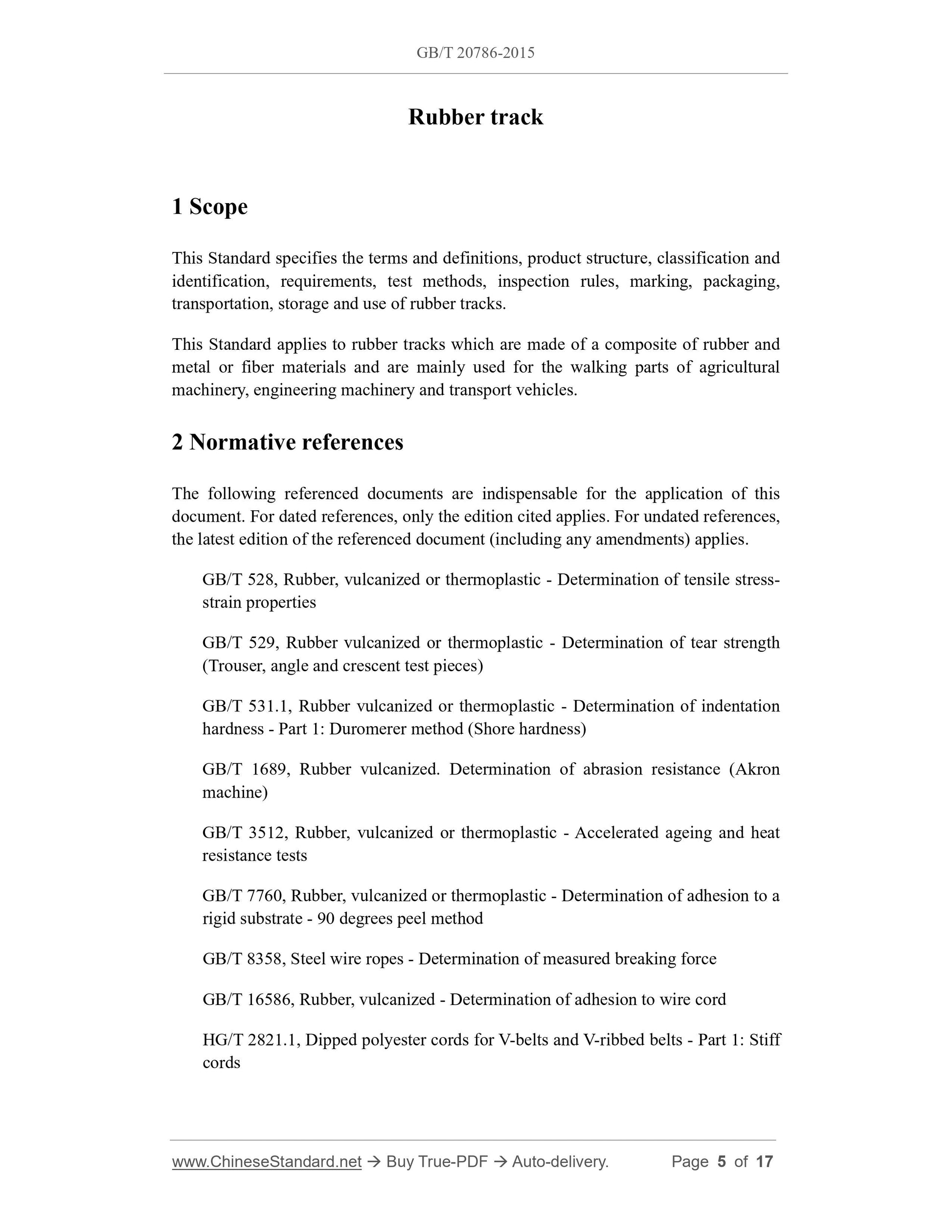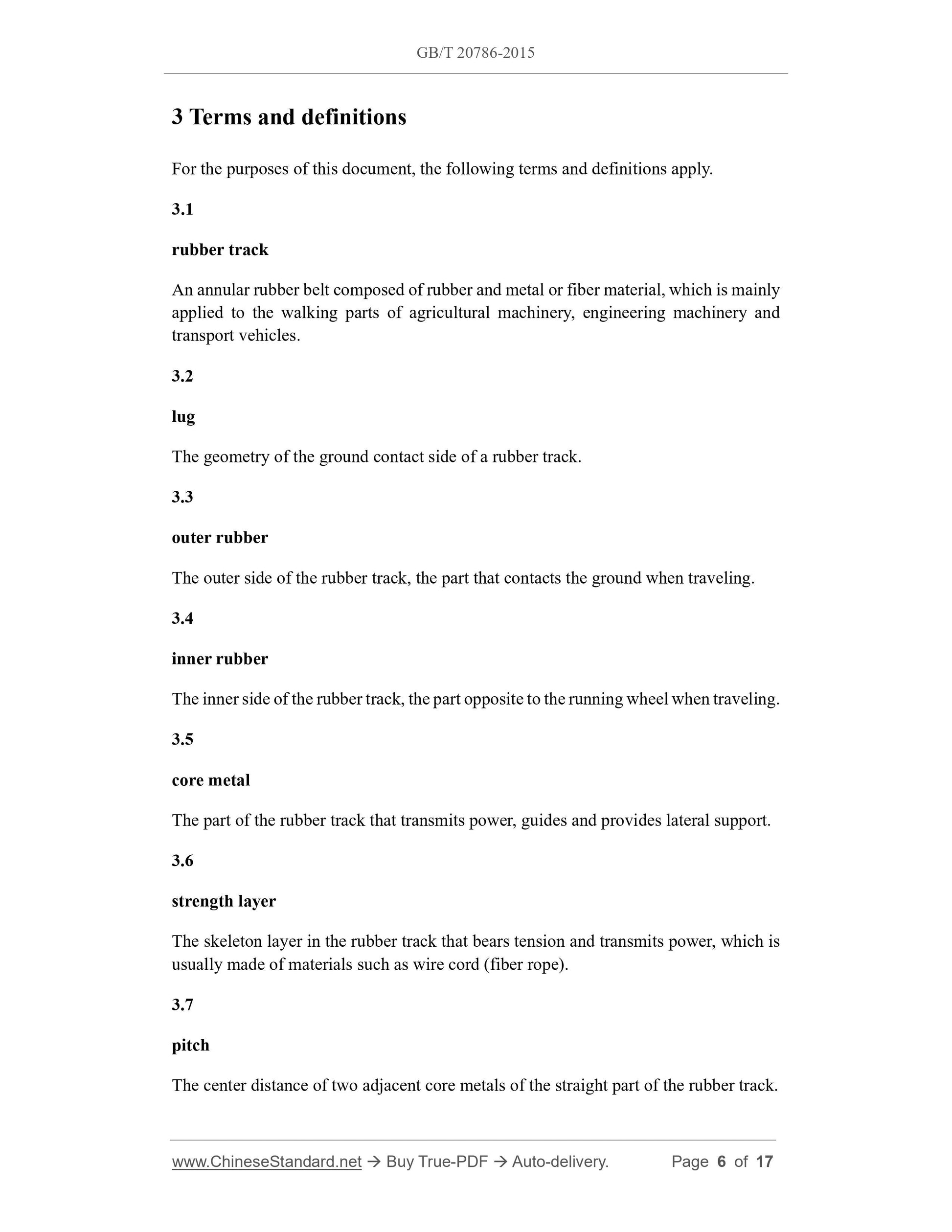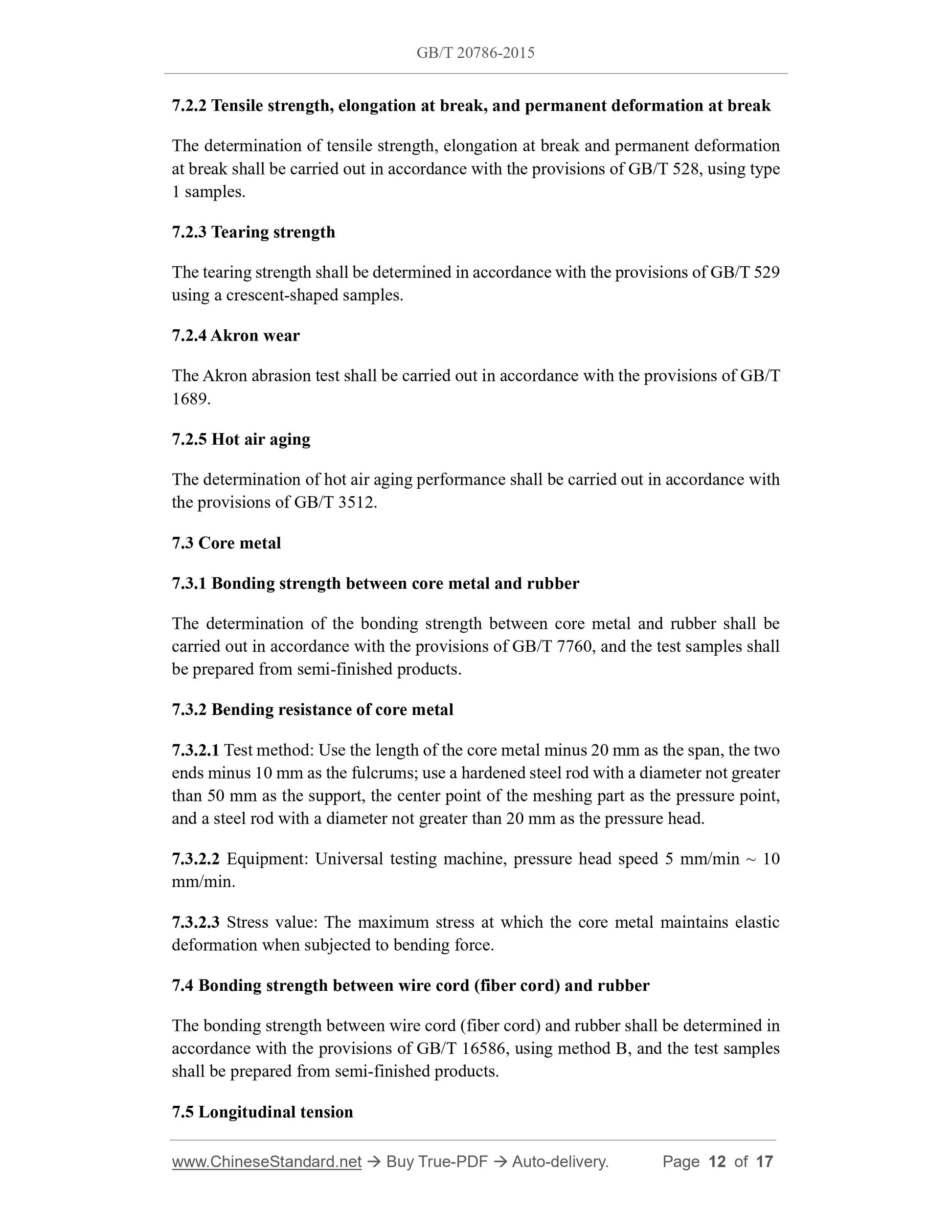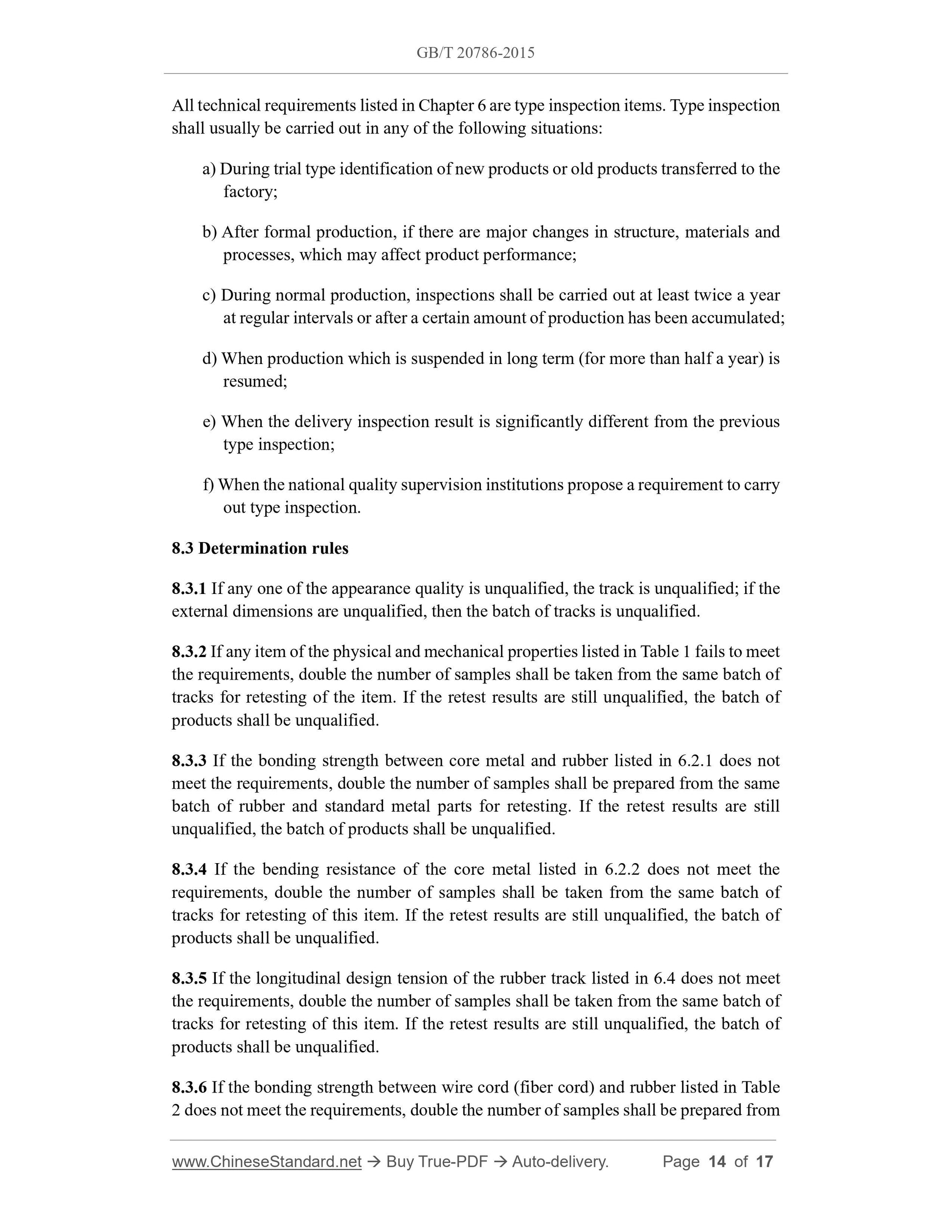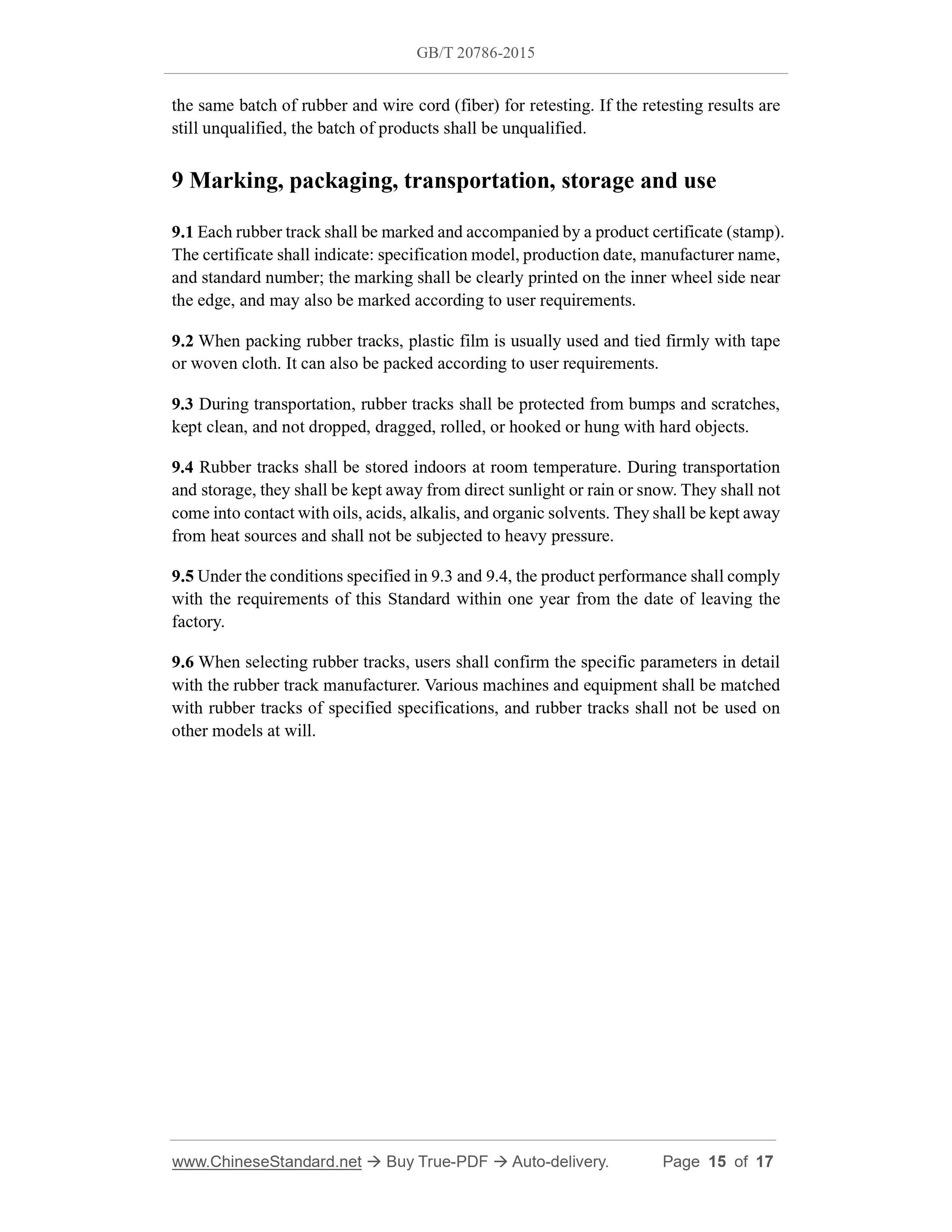1
/
of
7
www.ChineseStandard.us -- Field Test Asia Pte. Ltd.
GB/T 20786-2015 English PDF (GB/T20786-2015)
GB/T 20786-2015 English PDF (GB/T20786-2015)
Regular price
$185.00
Regular price
Sale price
$185.00
Unit price
/
per
Shipping calculated at checkout.
Couldn't load pickup availability
GB/T 20786-2015: Rubber track
Delivery: 9 seconds. Download (and Email) true-PDF + Invoice.Get Quotation: Click GB/T 20786-2015 (Self-service in 1-minute)
Newer / historical versions: GB/T 20786-2015
Preview True-PDF
Scope
This Standard specifies the terms and definitions, product structure, classification andidentification, requirements, test methods, inspection rules, marking, packaging,
transportation, storage and use of rubber tracks.
This Standard applies to rubber tracks which are made of a composite of rubber and
metal or fiber materials and are mainly used for the walking parts of agricultural
machinery, engineering machinery and transport vehicles.
Basic Data
| Standard ID | GB/T 20786-2015 (GB/T20786-2015) |
| Description (Translated English) | Rubber track |
| Sector / Industry | National Standard (Recommended) |
| Classification of Chinese Standard | G47 |
| Classification of International Standard | 83.140.99 |
| Word Count Estimation | 11,163 |
| Date of Issue | 2015-10-09 |
| Date of Implementation | 2016-05-01 |
| Older Standard (superseded by this standard) | GB/T 20786-2006 |
| Quoted Standard | GB/T 528; GB/T 529; GB/T 531.1; GB/T 1689; GB/T 3512; GB/T 7760; GB/T 8358; GB/T 16586; HG/T 2821.1 |
| Regulation (derived from) | National Standard Announcement 2015 No.31 |
| Issuing agency(ies) | General Administration of Quality Supervision, Inspection and Quarantine of the People's Republic of China, Standardization Administration of the People's Republic of China |
| Summary | This Standard specifies the terms and definitions of the rubber track, product structure, classification and marking, requirements, test methods, inspection rules, marking, packaging, transportation, storage and use. This Standard applies to a composite of rubber and metal or fiber material and is mainly used for rubber track undercarriages of agricultural machinery, construction machinery and transport vehicles. |
Share
